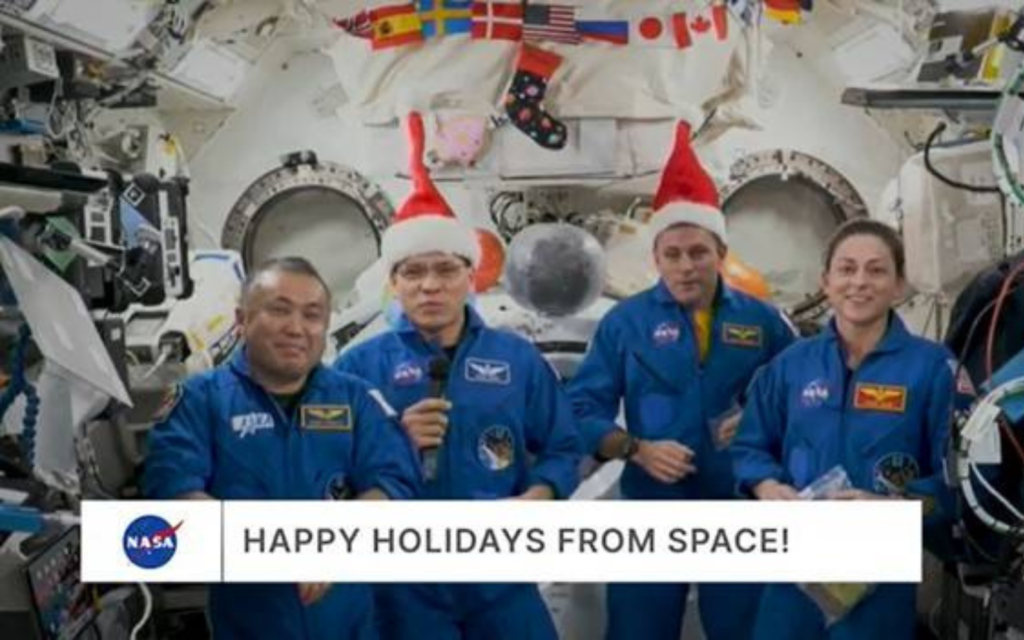Have you ever imagined what Christmas feels like when you’re outside our beautiful Earth? Well, some folks don’t have to imagine that. The National Aeronautics and Space Administration (NASA) shared a video of astronauts celebrating Christmas Day in space.
Spending Christmas in space has become a common occurrence for astronauts and cosmonauts as missions become more frequent and sometimes run over the holidays.
“For the past 22 years, holidays spent aboard the International Space Station have become annual, if not entirely routine, events,” says NASA.
Read More: Artemis: why it may be the last mission for Nasa astronauts
This year, the crew on Expedition 68 shared their out-of-this-world plans for the festive season, what they miss most about spending the festive season and what they plan to do on New Year’s Day.
Though some members missed cooking festive meals with loved ones, they planned to enjoy festive treats (and vegetables) and looked forward to capturing an image of the sun as it rises on 1 January 2023.
Video: NASA crew members share a holiday message from space
It wasn’t always the case, but spending Christmas in space goes as far back as 1968 when astronayts spent the holidays out of this world during the flight of Apollo 8 around the Moon.
“The first crew to spend Christmas in space, Apollo 8 astronauts Frank Borman, James A. Lovell, and William A. Anders, celebrated the holiday while circling the Moon in December 1968, the first humans to have left Earth orbit,” says the agency.
Expedition 68 crew members aren’t coming back to Earth anytime soon. They began their journey in September 2022 and they are expected to complete the trip in March 2023.
NASA says the expedition includes research focused on biology, science, human research, physical sciences, and technology development.
It says the expedition will provide “the foundation for continuing human spaceflight beyond low-Earth orbit to the Moon and Mars”.
Source: NASA
